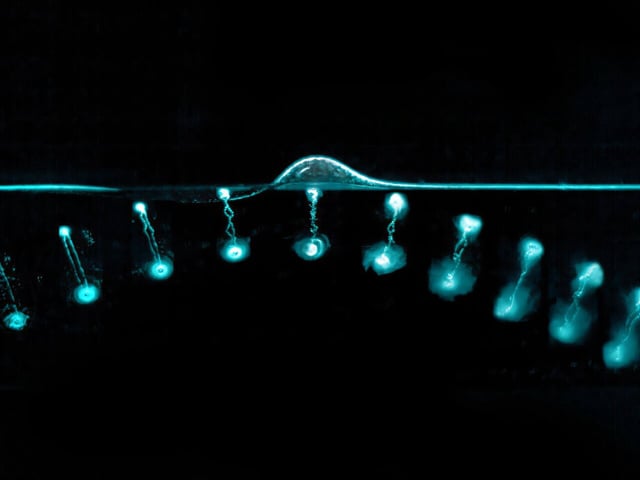Overview
- At shallow approach angles, rings rebound off the surface like elastic objects, retaining their toroidal shape and most of their energy.
- Rings moving more directly upward fragment on contact, breaking apart rather than bouncing back.
- Weak rings dissipate in the water before reaching the interface, while strong vertically aligned rings can penetrate and form jets above the surface.
- Experiments used a submerged piston to generate rings with controlled speed and angle, tracing their motion with fluorescent dye and high-speed cameras.
- Study published in Physical Review Fluids fills a century-old gap since Helmholtz’s work and offers insights into marine propulsion and oceanographic modeling.

